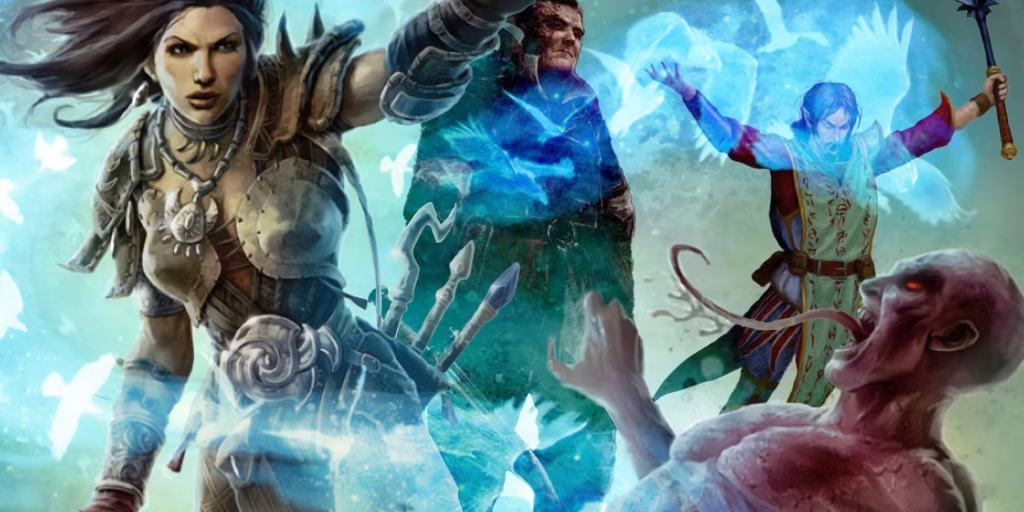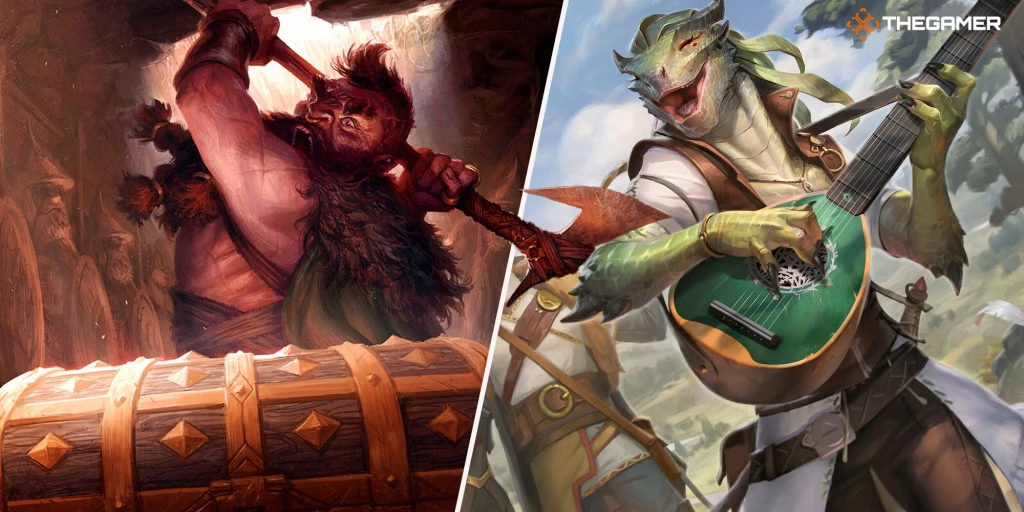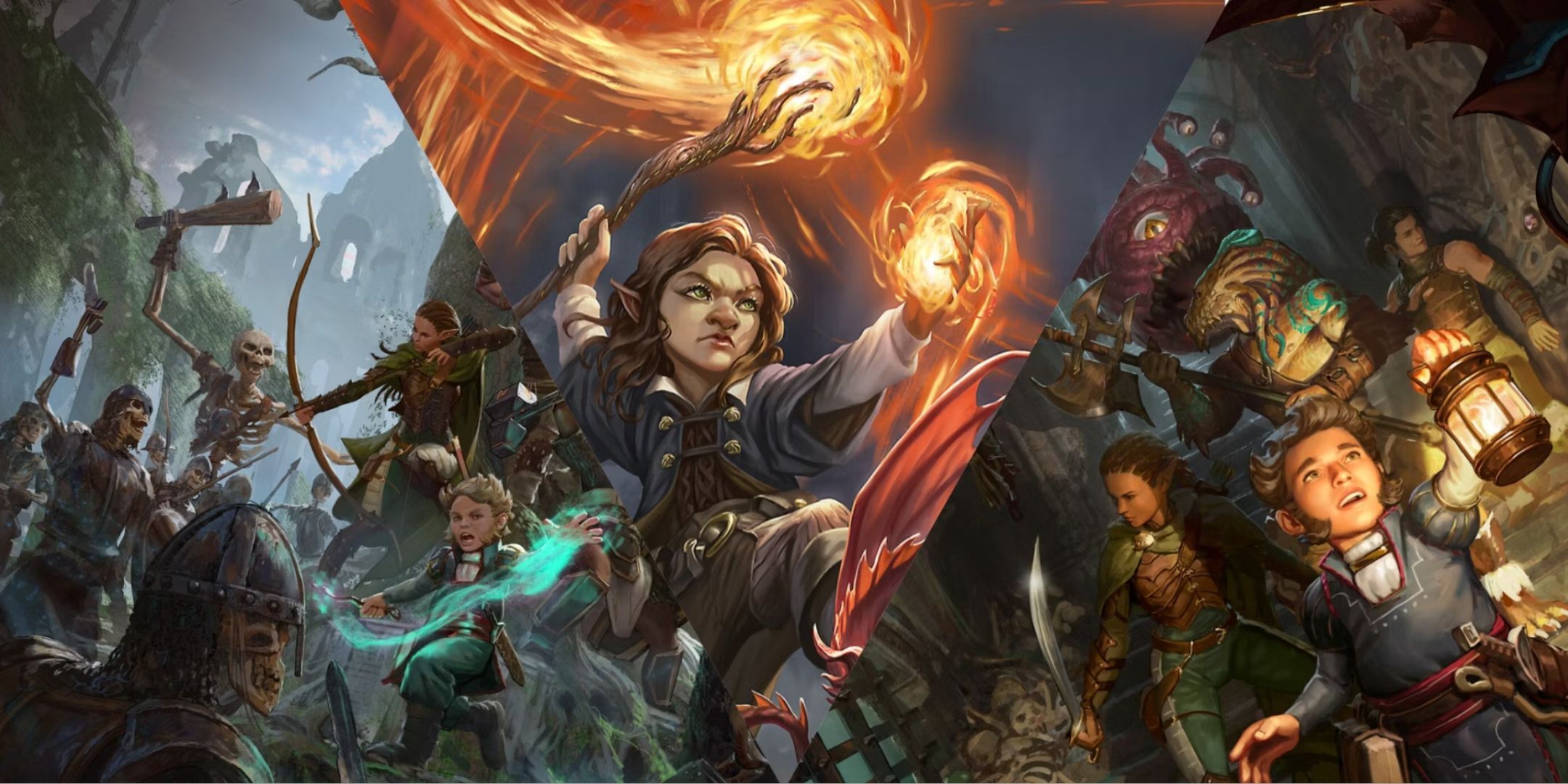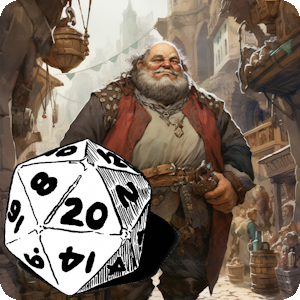D&D best Multiclasses
Multiclassing in Dungeons & Dragons (D&D) is a powerful tool that allows players to blend features from different classes to create a unique and versatile character. Done well, it can lead to legendary heroes with deep mechanics and rich storytelling potential. Done poorly, it can lead to a confused, underpowered mess.
So, how do you multiclass properly—and what famous examples show how it’s done right?

What is Multiclassing in D&D?
In D&D 5th Edition, multiclassing allows a character to take levels in more than one class, instead of continuing to level up in their original class. For example, a Fighter might take a few levels in Wizard to gain access to spells and arcane knowledge.
However, multiclassing has requirements: you must meet the minimum ability score prerequisites for both your current class and your intended class (usually 13 in the relevant stat). It also requires careful planning to avoid losing synergy between class features.

Why Multiclass?
Multiclassing is often done for one or more of the following reasons:
- Power Spike: Gain early class features (like a Paladin’s Divine Smite or a Warlock’s Eldritch Blast) to increase damage output.
- Survivability: Dip into classes like Fighter for armor proficiencies or defensive skills.
- Utility: Add new spells, skills, or roleplay flavor (e.g., a Rogue/Cleric spy-priest).
- Flavor and Roleplay: The story of a Barbarian who discovers divine power and becomes a Cleric can be more interesting than sticking to a single class.
Famous Multiclass Characters in D&D Lore
1. Drizzt Do’Urden (Ranger/Fighter)
- Quote: “I can stand against them all, because I stand for what I believe.”
- Why It Works: Drizzt, the iconic drow from R.A. Salvatore’s novels, is a prime example of multiclassing for combat effectiveness. He combines Ranger’s tracking and dual-wielding with Fighter’s combat maneuvers, making him a terrifying force in melee. His build reflects his adaptability and martial excellence.
2. Raistlin Majere (Wizard/Sorcerer – unofficial)
- Quote: “I have sacrificed everything to become what I am.”
- Why It Works: While not an official multiclass in 5e terms, Raistlin from the Dragonlance series is often interpreted as having both Sorcerer-like innate power and Wizard training. This duality makes sense in a homebrew setting—representing both raw talent and learned magic. It’s a powerful narrative tool to show internal conflict and evolution.
3. Tasha (Wizard/Warlock)
- Quote: “Every deal is just a spell away from betrayal.”
- Why It Works: Tasha, creator of Tasha’s Hideous Laughter, is portrayed in newer lore as a Wizard who dabbled in Warlock pacts. This blend makes sense for characters drawn to forbidden power but grounded in arcane study. Mechanically, it provides versatility and magical firepower.
4. Vox Machina’s Vax’ildan (Rogue/Paladin)
- Quote: “I’m the Champion of the Raven Queen. Death and I are… well acquainted.”
- Why It Works: From Critical Role, Vax started as a dexterous Rogue, then multiclassed into Paladin. This unique build allowed for sneak attacks combined with Divine Smites—a devastating combo. Thematically, it showed his evolution from self-centered thief to a chosen divine champion.

Popular Multiclass Combos and Why They Work
1. Sorcerer/Warlock
- Why: Sorcery Points + Warlock’s short rest spell slots = endless Eldritch Blasts. Metamagic + Hex = huge damage potential.
2. Paladin/Sorcerer
- Why: The “Sorcadin” is a classic. You get Divine Smite and spellcasting synergy, leading to high burst damage and great utility.
3. Rogue/Fighter
- Why: Action Surge + Sneak Attack = one devastating round. Excellent for assassins or swashbucklers.
4. Cleric/Wizard
- Why: Divine and arcane spellcasting combined. Incredible versatility, especially for support or utility casters.
Tips for Successful Multiclassing
- Start with a Strong Base: Know what your character is good at and build from there. Don’t spread yourself too thin.
- Plan Ahead: Think long-term—when will your next power spike come? Is it worth delaying higher-level class features?
- Check Stat Requirements: Don’t get locked out by low scores.
- Mind Spellcasting Rules: Multiclass spellcasters must combine spell slots but track known spells separately. It can get complex.
- Follow the Story: Always tie multiclass choices to character development. Why are they branching out?
Final Thoughts
Multiclassing in D&D isn’t just about min-maxing—it’s about telling a story. A multiclassed character is one who has evolved—through hardship, revelation, or ambition. Whether you’re an arcane trickster who found religion or a barbarian who studied wizardry, multiclassing is one of the best ways to shape a narrative and deepen your gameplay.
So go ahead—break the mold, wield both sword and spell, and create something truly legendary.
